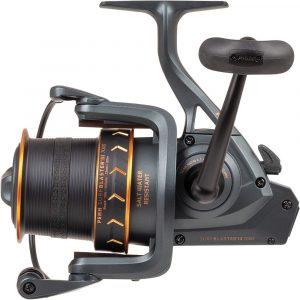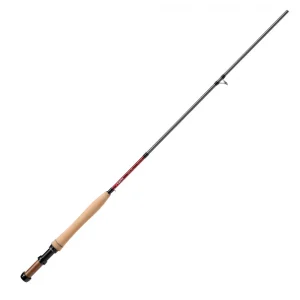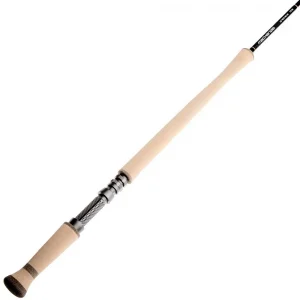Things Are Not Always What They Appear When Fishing!
I was fishing in my local lake last in March/April. Not quite T shirt weather but not heavy clothes either. The lake has 21 pegs (quite small) and there is usually someone you know.
The conversations goes:
“How you doing?” and replies come back
“Not bad/good”
“What you fishing on?”
“Maggots”
“Can I Borrow some ”
Or “I am on worms. I have my own wormery so if anyone has there own container I have spare”.
“I am on pellets and not doing any good. I can swap with you”
This particular afternoon there was three of us fishing and chatting. The is a gated entrance that leads to a gravel area that we laughingly call car park so when a different vehicle arrives everyone seems to take note.
A Mercedes Benz pulls up so you can imagine it stood out among our vans and bangers. A guy gets out and is immediately out of place. He has a pin striped suit with tie. He looks around the lake taking in all surroundings.
Now I will always go and survey a new fishing venue but I don’t go in my Sunday best. He is on mobile phone and smiling about but not engaging in anyone.
Then an Audi pulls up and a young lady gets out and they embrace. Now they have the attention of all of us. This is a strange place to have an assignation. They keep holding hands and talking and waving their hands about while looking over the lake.
Then the guy comes over to where I am fishing trying to mind my own business. He says “excuse me. May I have a word with you?”
Now that type of language is not what you hear at a fishing lake.
I said “of course mate. How can I help”
He said his Father spent so much time fishing in the spot where I am and he had recently passed away. His sister and him would like to spread his ashes where he spent so many happy hours.
Of course. I moved my gear out of the way and they went back to the car and came back with a pot.
He had black polished shoes and the lady in high heels trying to look poised but failing. They deposited some grey ashes all around the peg and said a few words together.
They embraced again and left leaving us smiling.
We all agreed that it wasn’t what we first thought. I spent the rest of the afternoon on a different peg smiling.
I always tip my cap when I fish that peg thinking of the guy and his children.
One of the most enjoyable parts of fishing is seeing nature in all its glory. There is something special about seeing a family of ducks with moma and poppa ducks floating along a lake effortlessly with all their chicks floating behind.
Seeing full-grown swans in all their majesty in full plumage. Sometimes they can be a pest if they want to come to where you are fishing and want to take your feed or if you are fishing in the place where they enter or leave the lake. They can have a mind of their own.
My Experience Of Nature Whilst Fishing
However, not all situations are so good. I have had a couple of scares with snakes that left me shaken.
Let me say right up front that I have a tremendous fear of snakes so when I saw my first one close it frightened me. I was fishing on a lake in a favourite spot. There is a flat area but to my right are some bushes on an outcrop. I had two rods fishing on maggots. The right-hand rod was a feeder and I was just flicking the line just outside the bushes for Carp and was fishing with a float for roach etc. with the other rod directly in front of me.
Now I am not a professional fisherman. I’m just an ordinary amateur who enjoys fishing and this particular day I was catching some carp (avg. 3-5lbs) on the feeder and catching a nice roach and perch. I have never entered a match but thought to myself “I wouldn’t mind entering a match at some time”. I just looked down at my feet; about 6 inches from my foot was a snake. I jumped up, shouted out and looked back but the snake had gone. It was a grass snake but it still frightened me and I collected my gear and packed up. I did return and fish in the same spot without any incident.
On the same lake, on an outcrop of land large enough for three pegs. I am fishing with the same rig of two rods, a feeder and one float.
It was summer; I was wearing shorts and enjoying the sunshine when along the edge of the lake this adder snake looking for somewhere to come onto land.
I pulled one of the rods and with the end tried to push the snake out of my way and into the lake. However, the snake wrapped itself around the end of my rod. I tried to flick it off and smacked the rod onto the water. This broke the end of my rod but the snake was gone. My heart was beating like mad.
I had read about a brave Australian guy who had come to the rescue of a man who had a poisonous snake wrapped around his ankle, he had grabbed the snake and killed it only to die by what they thought was snakebite but was by heart attack. I could understand how that happened.
Now I decided that I wasn’t going to be denied my fishing so settled myself down with a drink out of the flask and a sandwich. Down to one rod and float.
I know what people say that you should leave them alone and I am sure this is true.
I have fished that lake since but not those pegs.
Last Summer I was invited to a day of Sea Fishing in the wash.
The invite came from the boat owner, Rhinate who also owns Baytree Nursery at Weston Spalding — a brilliant garden centre.
The boat is moored on the River Nene and is accessible by climbing down the ladder from the bank. The deal is that he supplies the diesel for the engine and food, this was bacon, sausages, potatoes, eggs, tomatoes tea and coffee. All guests were asked to bring a cake and a bottle of wine.
There were 6-7 guests (sorry I didn’t count) and when we were all settled we turned the boat around and made our way down the Glen, passing Pinchbeck and eventually into the Welland. By this time the river was tidal and the ship just “went with the flow”.
Along the way, we launched a small dinghy and a couple of men rowed over to the bank to collect Sand Fire. This green vegetable is revered by top restaurants for their fish dishes. I believe it costs a lot of money. You have to be very careful when collecting to make sure that the roots are not disturbed. When we were children it was plentiful and the fisherman used to come house to house selling Sand Fire and Winkles. You cook Sand Fire in boiling water and vinegar, it’s very rich in vitamins.
Sea Fishing In The Wash For Mackeral
The Welland runs out into the wash. Two guys on the boat had been several times and knew the procedure. They made the rods and baits ready for our first fish. We were way out in the wash and could see other boats all fishing. We dropped the anchor and started fishing for Mackerel.

The rod I had was about six foot long and my friend had rigged the line with four hooks and bright blue coloured feathers. All we had to do was move the line up and down to draw attention to the bait.
Because it was the first time a friend was behind me releasing the fish. I think I caught 6-7.
Moving Further Into The Wash
We then moved out further in the wash making our way towards Cromer and tried our luck line fishing for Sea Bass but we only caught one that was too small and went back into the sea.

We dropped the anchor and two of the guys had started preparing the food. Why is it that food always tastes better when you are with good company outdoors? Bacon, sausages, fried potatoes, tomatoes and fried bread along with a glass of wine.
Back to fishing trying a new spot looking to where the birds are diving but no sea bass today.

Returning on the tide I had a hand at steering the boat. It is amazing how the buoys attract the ship to them and you have to give them a wide circle.
On the way back we gutted and cleaned the mackerel and divided the catch into equal shares along with the Sand Fire. I had 7 mackerel and a handful of Sand Fire.
We all retired the ship at Surfleet. This was very handy for getting collected and well worth a visit.
I hope that you enjoyed reading about my day of Sea Fishing.
My two grandchildren visited from their home in Peterborough to stay over for a weekend. They are Sophia aged 13 and Elliot aged 8. They know I love fishing and asked if they could have a try.
One of my favourite lakes is a small family-owned lake at Hubberts Bridge, Boston.
I asked the lady owner if I could take the kids there as they are well-behaved and she approved. Her husband was a great guy called Simon and he had planned to build a bungalow overlooking the lake and retire.
Unfortunately, he died very suddenly when he was constructing the bungalow but he was so well thought of around the community that his friends rallied around and completed the home for his wife.
The lake is not very big and is usually not very busy. On this particular afternoon, we were the only ones in attendance. There are some nice carp, on average 3-5 lbs, along with bream and perch. I set up my granddaughter first. We used punched white bread as bait on a float, and she soon reeled in her first fish.
Then I got Elliott set up with the same rig, but he has a bait runner reel. They both kept me busy unhooking fish and baiting up for them. Suddenly Elliot shouted the immortal words “GANGEE”. He had hooked a brilliant carp and I had to lend a hand to reel it in the fish.
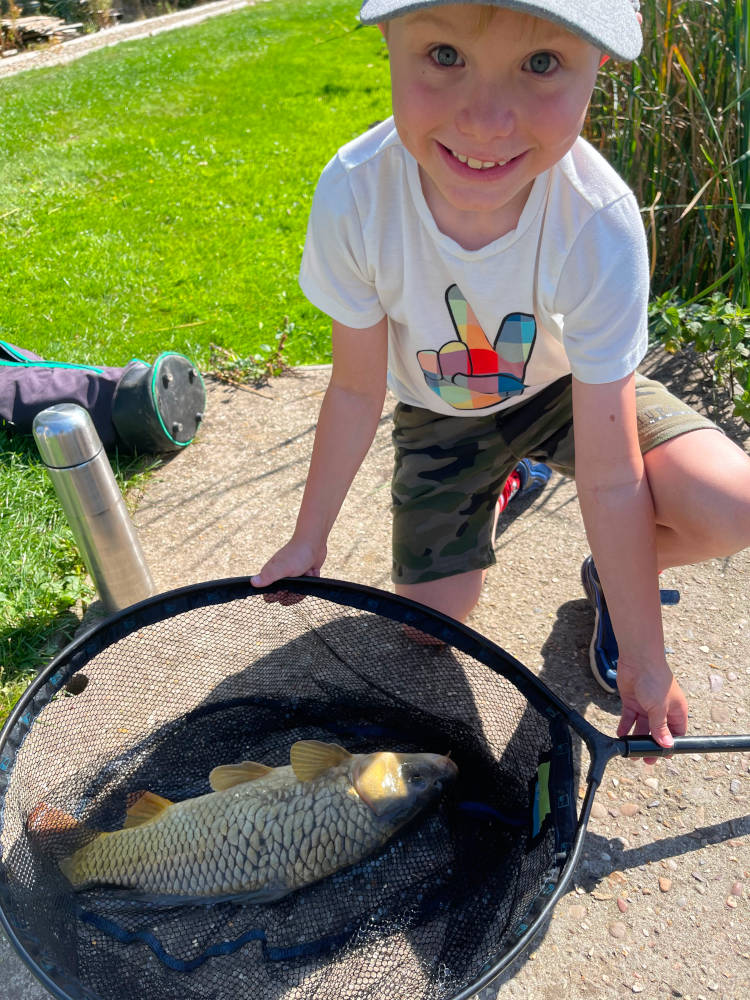
The fish weighed 5 lbs. Now he was hooked on fishing and concentrated on the float and casting – a truly brilliant day.
As an aside, we took the kids to the “We’ll Meet Again: WW2 Museum” in Freiston, Boston. This Museum is well worth a visit, it displays memorabilia from the World War.

The act of fishing takes you into some of the most scenic places and gives you time to be with people who are precious to you.
However, when you have all the gear you need, the techniques you have acquired, and the scenery and companionship you love at the end of the day it is about catching fish.
A particular rod and reel that is your pride and that you are hoping to pass down to your grandson really is a work of art.
You have learnt how to set your rig in a particular way that suits you.
First, rod out of cover and assemble. Align with one eye closed so the rings are in perfect alignment. The reel is screwed on and the line is passed through rings and ready for float and hook or whatever we are using today.
Now the heart starts to pound just a little faster with excitement. Will this be the day of the big one?
You know you can cast to where you want to fish.
Bait is perfect. The sun is out so a little screen across the forehead. Here you go.
To be a true angler you need to know when to strike at a bite, how to play the fish and be able to land it.
Catching a fish is like riding a bike. The best way to learn is to actually attempt to do it.
But as the way with all things, preparation can help and improve your chances of success when everything goes right and you get a bite.
Different fish have different takes. A pike will pull you to the other end of the lake but a trout will be oh-so-dainty. A roach may take your bait and spit it out but a carp will try to pull your rod in.
A big bite doesn’t require a big response. You have to learn how to play the bite. Don’t try to pull the fish out of the lake but let it take the slack and strain. Now the rod bends!!!! – Beautiful feeling.
Now we are in fishing territory that cannot be explained until you have had a decent fish at the end of your line. This is what you came for. The nerves kick in. You cannot lose it. You have done everything you wanted. Now you have to land. The fish doesn’t want to leave the water and is going to fight you. It will try to find a reed or cover. Try to find something to hold on to.
Just two little fishing tips here
1. Keep a tight line.
2. Let the rod take the strain.
We have a fish on a line and the rod is bending taking a lot of the strain. Now we have to be crafty and that comes with experience. We try to get the fish near the surface so we wind the reel in the line. But the fish will try to dive so we give them a little line. We wind the reel a couple of times and dip the rod. Now the fish is going side to side. Who tells them what to do? We can feel that the fish is tiring and we can use the reel a bit more. We are bringing it close to where we can use the landing net. Just as soon as the fish sees the net it has a new lease of life and makes a break for freedom. But now the line is close and we can manoeuvrer to place the landing net under fish and land. Well done.
Fishing is not a blood sport and one of the nicest aspects of fishing is the ability to sustain the sport by releasing. Care should be taken to remove the hook as safely as possible and not to stress the fish. Try to ensure it is breathing by laying the fish in the water and make sure it’s gills are working and slowly releasing. That fish has given you brilliant sport.
Although it is an old saying that you need to be prepared it is very evident that the better prepared you are for fishing the better results will be. This article will provide a short list of fishing equipment that I recommend.
Common Fishing Equipment Often forgotten
I don’t want to take the spontaneity of the fishing away but so many times we arrive at the fishing venue only to be amazed that we have left something behind.
First Thing: Clothing For Fishing
You are not going to a fashion parade but you do need to be comfortable. It can rain sometimes or a wind suddenly appears. Make sure you have a warm jumper/top and a rainproof jacket. You start first in the morning and the weatherman says early mist will clear. Don’t believe them. It can be cold and damp first thing in the morning.
Have your T-shirt and shorts ready for when the sun does get out and you can bronze up.
For underwear use general everyday wear.
Always have a turtle-neck jumper to protect from early spring winds.
Long johns for winter are essential, especially for sea fishing.
We like shorts with plenty of pockets so we can fill them with our rubbish.
Every fisherman has their favourite pair of jeans that have lasted all these seasons and we are NOT going to change. Don’t let her indoors and throw them away yet.
Fleece is a good idea
Hoodies are a must
Waterproofs at the ready
Hat
Chairs – You need to be comfortable. Your bum is going to spend a few hours on that seat so maybe we can “borrow” a cushion to help things along. Once you have used the cushion it is a hard job to get back to the lounge so why put yourself through that agony? Might as well keep it.
Always take plenty of liquids. The best way to get a bite on a quiet day is to pour yourself a cup of coffee or tea from a flask. As soon as you are pouring your drink you will get an immediate bite. It works so many times.
Before you set off to fish it is vital that you are licensed. You do not require a license to seafish. You do need one to fish any freshwater from the environment agency. You can buy a day, weekly or annual. Always take it with you and be prepared to show the water bailiff.
Key Fishing Dates To Remember
Coarse fishing usually starts 16th of June until the 14th of March.
Game fishing – Trout and Salmon season is from March 15th until September 31.
There was a time when the only fish you were trying to catch with a fly was trout. The fly was a bit of feather and a bit of fur on a hook. Today fly fishing anglers can fish for trout, salmon, pike, carp, chub, bass and on and on.
Key Thing About Fly Fishing
The key thing about a fly is the lack of weight. The weight of the thing at the end of your line bends your rod and is catapulted to where you want to fish. A fly has very little weight. By using a heavy line in a bull-whip motion you can propel your fly to where you want to fish.
The fly when properly delivered sails through to your target and will land very softly. A fly may well work when nothing else seems to do the trick.
Fly Fishing Rods That I Recommend
The life of a Mayfly.
A mayfly starts out as an egg on the bottom of a stream. Soon the egg hatches and out crawls a many-legged little creature called a nymph.
When you see trout with their noses down rooting about on the bottom of a stream they are often feeding on nymphs.
Nearly one year to the day when it began life as an egg the nymph is ready to hatch and to become a hatch.
The emerging stage begins when all the mayflies of a particular species (and millions of mayflies may be in a single stretch of stream) shed their old skin, rise to the surface, sprout wings, dry themselves and for the first time fly.
When this particular time is evolving, between when they begin to shed their skin and when they take their first flight the mayfly is at its most vulnerable. When a hatch is on the trout know that there is plenty of easy-to-catch food around just for the taking.
Many mayflies for one reason or another are not able to shed their wings and are therefore easy prey.
For the mayflies that evolve and fly for the first time they head for cover in trees and bushes. Soon the males fly over and mate in mid-air. The male drops to the surface of the stream and dies. The female deposits her eggs in the stream and also dies. Life starts a new cycle.
There are too many flies to compare in this short work. So many books are available from specialist fly fishermen. But hope this sparks an interest in a brilliant sport.
Sea fishing is an unbelievable experience that should only be undertaken by experts. I have a friend in Spalding Lincolnshire who has a boat that fishes in the Wash near Hunstanton.
Sea Fishing may not always be local since we don’t all live near the coast. When you find saltwater you find an almost limitless variety of fish.
Many of the techniques used in freshwater carry over to saltwater, however, the game changes a bit when you are dealing with the fast, strong fish of the sea.
For this reason, tackling saltwater can be intimidating. But if you limit your initial forays into sea fishing to the inshore waters – places like estuaries, beaches and piers then beginners can find plenty of exciting action.
What Can Be Caught Sea Fishing?
In the case of saltwater fishing the sea’s the limit. Fishing inshore anglers could catch everything from conger eels to plaice. Winter anglers can expect flounder, cod and whiting from beaches.
Spring and Summer see the return of Bass and mackerel to give excellent sport.
Flat sandy beaches and estuaries offer flatfish and Mullet.
For the hardy fisherman rock marks hold wrasse, pollack and various dogfish.
Charter boats and their skippers can lead you to deep sea fishing for powerful congers, rays and other creatures. With sea fishing, you don’t know what you are going to catch next, which is part of the allure.
There are many fish in the sea and this time the saying is true. Saltwater fishing offers anglers the opportunity to fish everything from quiet harbours to rocky beaches and deep water wrecks.
Sea fish tend to be stronger and faster than their freshwater cousins because of their environment. There is also the size to consider.
Common Sea Fish That Can Be Caught
Many seafood are tasty and can be taken to the table. We lack space here to name all the species you may find in the sea but here are a few that you may be able to catch.
Flatfish
This fish is brown on one side and white on the other. This allows the fish to lay on the ocean floor and blend in surroundings.
Flounder – A winter staple.
A common target for anyone even on cold days. They don’t grow very large (2 lbs is a good fish) but are widespread and you don’t need long casts or special equipment.
Plaice – Spotty and highly prized.
Can you imagine eating plaice and chips that you have caught yourself? In Summer can be caught for beaches.
Dab – Small but tasty.
Dabs are one of the smallest flatfishes. What they lack in size they make up for in taste. They can be caught off beaches.
Cod family
Cod seek cold water so for this reason they are prevalent in the North Seas. Cod have huge mouths so the best baits are lugworms and peeler crabs. From the shore smaller codling up to 6 lbs are common and for larger fish, we need to take the boat. Twenty-pound cod used to be common but unfortunately due to overfishing that would be considered a good fish.
Pollack
Pollack is a powerful member of the Cod family. Small pollack are common on rocky shores and sea walls whereas larger ones favour deep reefs and wrecks.
Pouting
Possessing the goatee-like chin barbel the pouting is one of the most common sea fishes. It is related to cod but not highly rated for the table.
Whiting
This fish is a miniature type of cod that will feed on worm or fish bait. Shingle beaches in Winter are favourite for catching whiting
Sea Bass
Best-loved of all sea fish. It is a beautiful fish in appearance and can reach good sizes. Bass can very often be caught close to shore anytime after spring.
Wrasse
These strong fish are common around rough ground, harbours and man-made structures and give anglers good sport.
Mackerel
Mackerel can be caught from a boat but shore anglers should look for deep water. feathers are a good way. Simply move up and down and catch 2-3 every time.
Grey Mullet
These fish are easily spotted around harbours and jetties in the Summer. Mullet are among the strongest of all fish and give good sport
Sea Bream
Sea Bream is one of the most prized catches and provides brilliant sport. Most are caught by boat.
Skate
Boat fishing is best to catch these fighters. Once they take the bait they are gone and provide good sport
Conger eels
These command strong tackle and strong arms. You either love these or hate but they provide brilliant sport and can grow to awesome sizes around wrecks.
The above is a short list of sea fish but should be able to create interest.
In this article, I will explore some of the different fishing baits that can be used when lake fishing.
Fish still eat when you are not there trying to catch them. Fish will try to find shelter and protection, reproduce when the time is right, and eat. Fish do a combination of these activities all year round. So when you show up at their home with a fishing rod in your hand, you are simply stepping into a world in progress.
When you offer fish a hook baited with something they are used to eating, presented in a way that looks natural, you have an excellent chance of catching fish.
Equally, fish have no problem accepting less natural baits introduced by anglers. Indeed, on waters where fishing is regular, the fish quickly accept offerings such as maggots or pellets as “natural.”.
Over decades of trial and error, anglers have discovered that fish will eat all sorts of baits; bread, sweetcorn, and cheese are three examples that could hardly be called natural, but they still catch plenty of fish.
Stranger baits include sweets to chunks of liver; part of the fun is working out which baits work and which ones do not for each place you fish.
Bait is easy to obtain and use, and it often works more effectively than anything else. Some species of fish (like catfish) can be caught reliably only with bait. Almost every fish in the world can be caught with some sort of bait.
Bait, by popular definition, is anything natural (think worms) or processed food (say cheese) used to catch fish. Over the years, the term lure has come to mean any artificial offering made of plastic, wood, or metal to mimic a moving living thing. Lures typically imitate fish.
Baits can be divided into different categories and styles.
Natural baits.
Anything that a fish finds and eats in its habitat is considered natural bait.
Minnows, crabs, insects, slugs, sand-eels, worms, prawns—you name it.
Fish eat what is available, and using the same natural bait is an effective technique. Some baits are classified as natural offerings and may not often be found in nature. Maggots, for example, are so universally accepted by fish that they also fall into this category.
Live-baits
The term live bait most often refers to fishing with natural bait, usually a fish while it is still alive. For example, hooking a minnow through the lips and allowing it to swim freely. These are very effective for predatory species such as pike, perch, and bass. Many anglers are going off this method and are using lures to effect the same results.
Dead-baits.
As the name suggests, dead fish are used to offer your quarry an easy meal. This could be freshly killed roaches or half-mackerel. Species such as catfish, eels, and pike respond well to the potent smell of a smaller fish. Sea scavengers such as dogfish and rays will also accept a free fish supper in the summer.
Processed and man-made baits.
Manufacturers produce a variety of baits designed to attract fish. Made with real or processed foods, baits are sold alongside fishing tackle in packs. Pellets and boilies are typical examples, as they are full of protein and attract fish with different flavours.
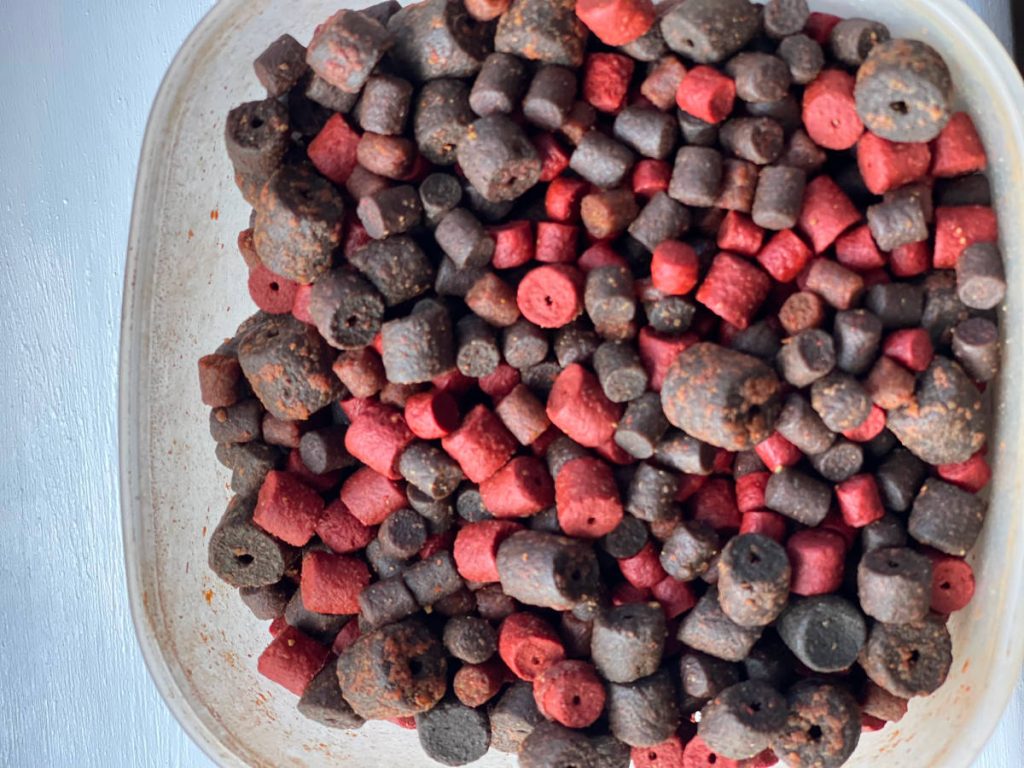
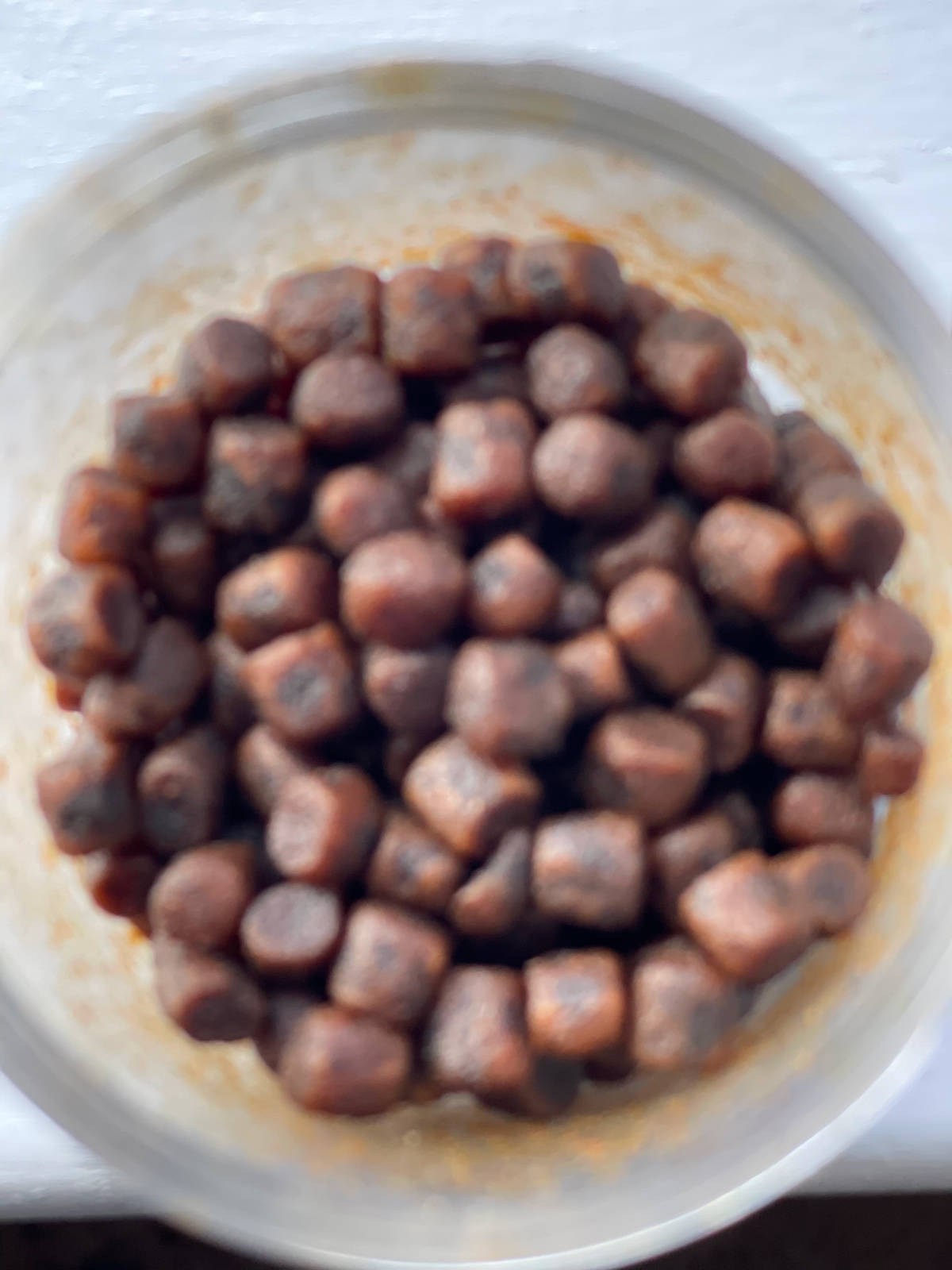

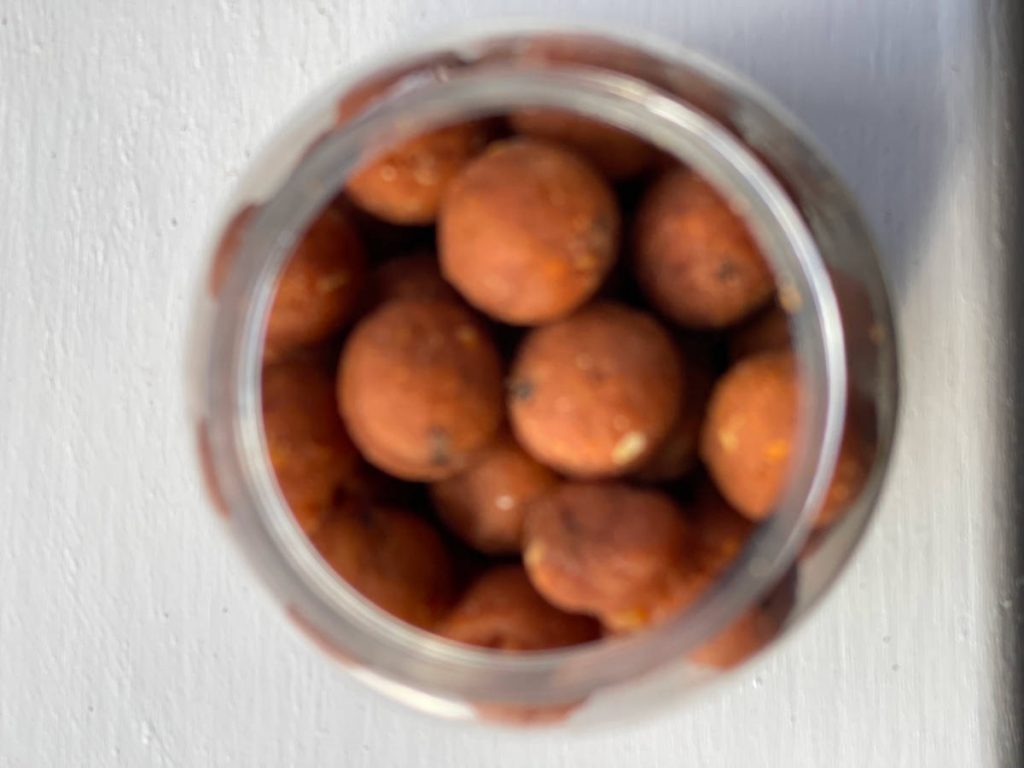
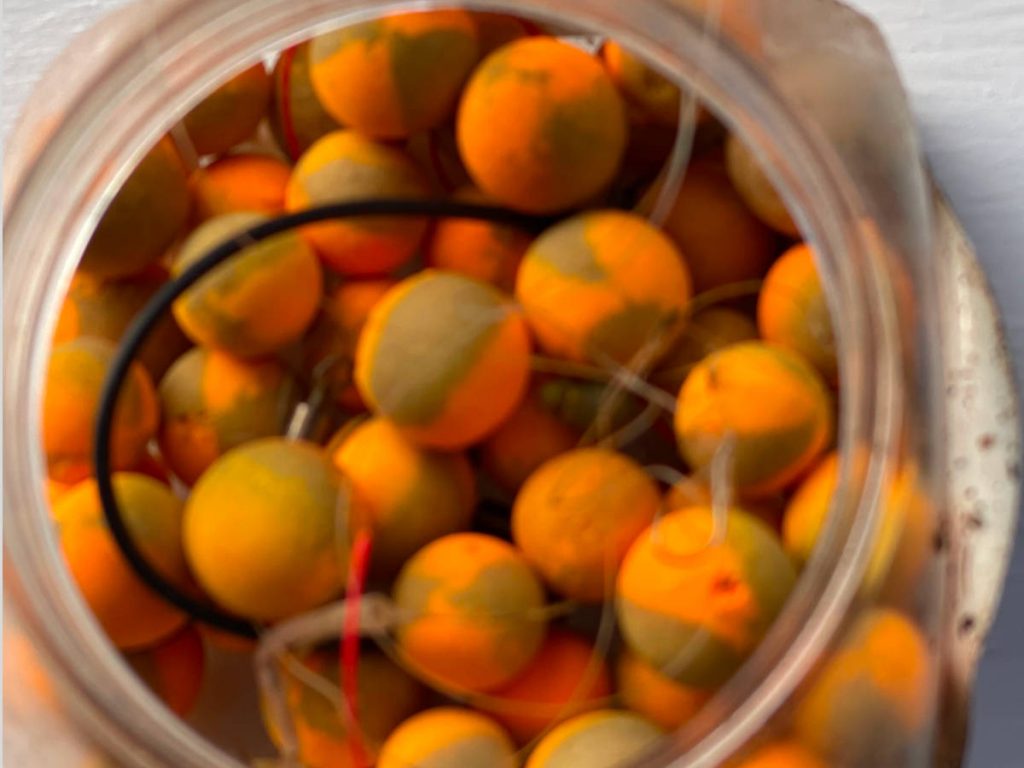
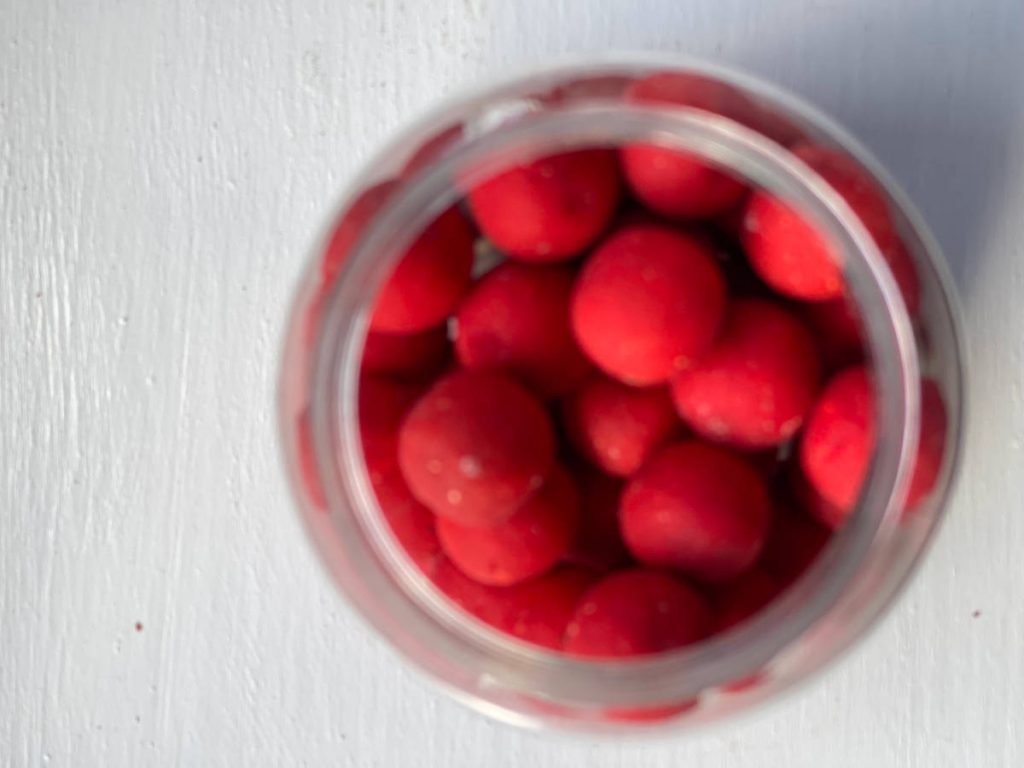
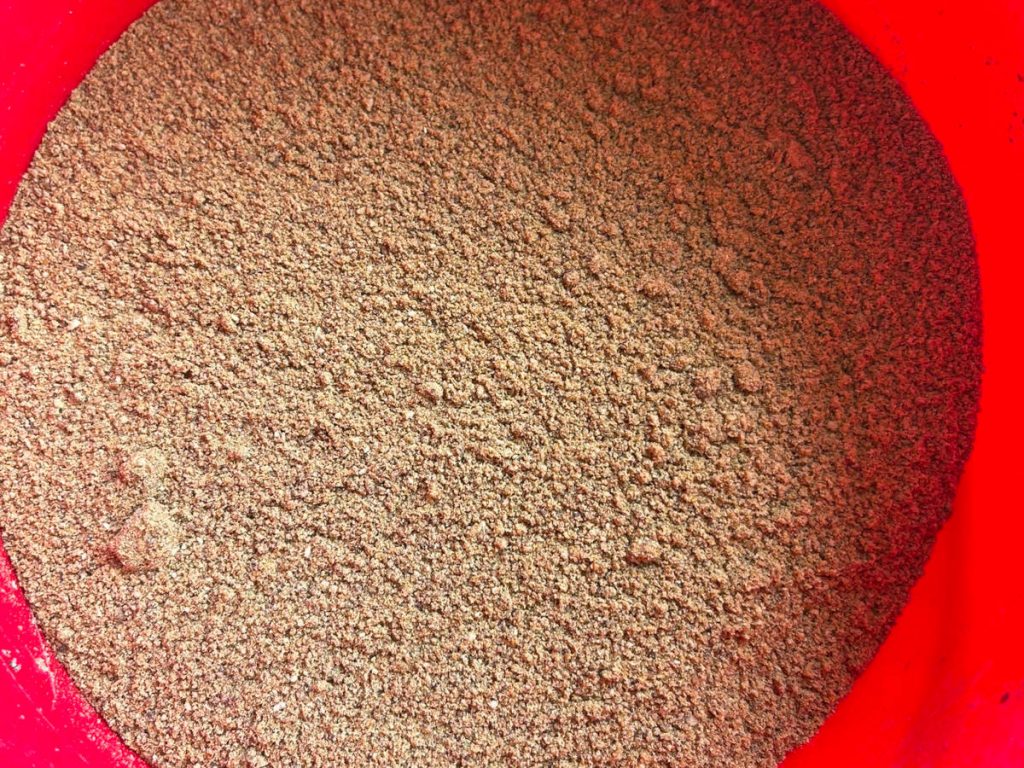
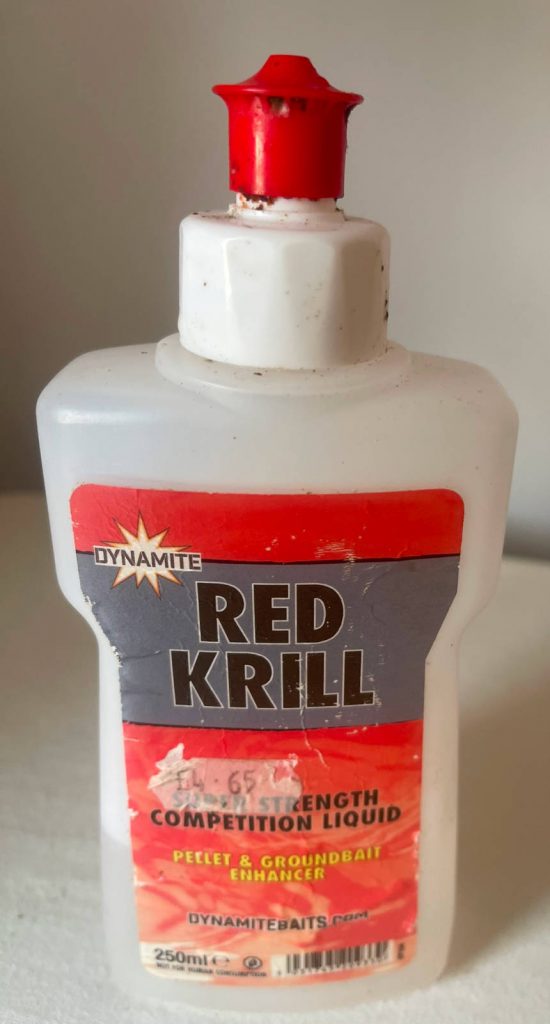
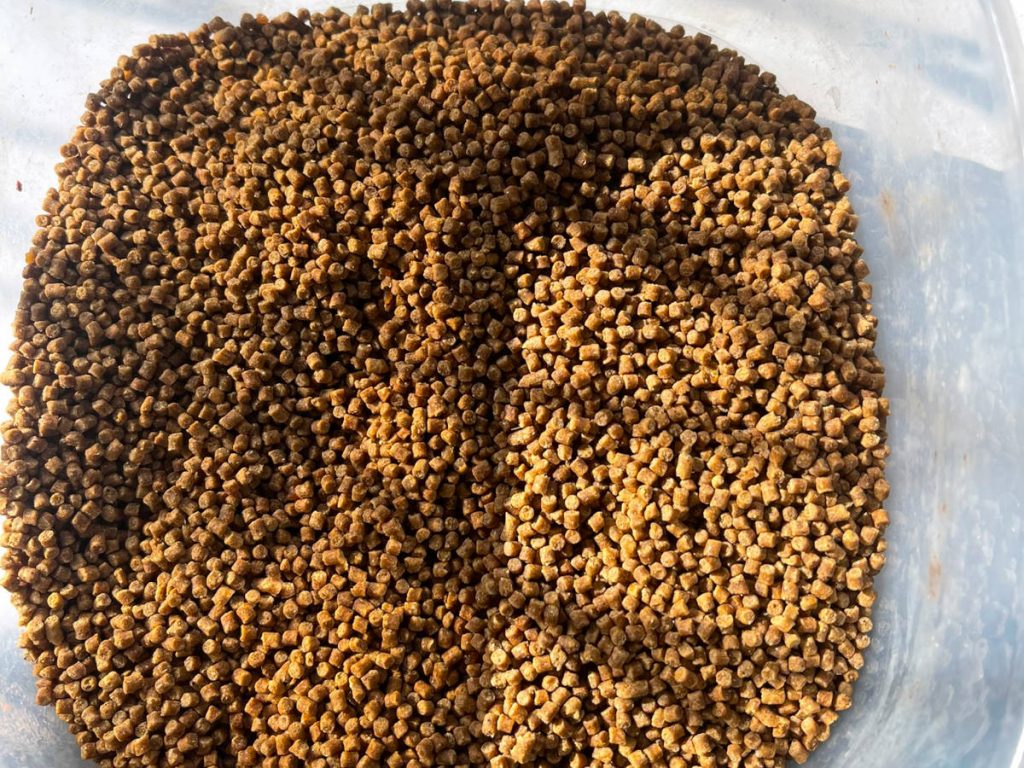
Additional Resources
The UK Government website guides fishing bait rules and regulations for fishing in UK lakes.
In this article, I will explore some of the most common lake fish species, their behaviours, and habitats. I will share some tips on how to catch them.
Lake fishing is a popular outdoor activity that offers a blend of relaxation and excitement. Whether you are a seasoned angler or a beginner, understanding the different fish that inhabit lakes can enhance your fishing experience.
Types of Lake Fish Species
1. Bass
Bass are among the most sought-after lake fish species found in freshwater lakes. There are several types of bass, including largemouth bass, smallmouth bass, and spotted bass.
- Largemouth Bass (Micropterus salmoides)
- Recognisable by their large mouths and dark green bodies with horizontal stripes.
- Typically found in warmer waters with plenty of vegetation.
- Prefer hiding in areas with cover, such as submerged logs, rocks, and weeds.
- Aggressive predators feed on smaller fish, insects, and amphibians.
- Fishing Tips:
Early morning and late evening are the best times to catch largemouth bass. Use top water lures, crank baits, or soft plastics. They often strike when the lure mimics the movement of their natural prey.
- Smallmouth Bass (Micropterus dolomieu):
- Smaller than their largemouth cousins. Have bronze-coloured bodies.
- Known for their fighting spirit, making them a favourite among anglers.
- Found in cooler, clearer waters. Prefer rocky bottoms and are often found near drop-offs and submerged structures.
- Fishing Tips:
Small-mouth bass are active during daylight hours. Use jigs, spinner baits, or live bait like minnows.
2. Trout
Trout are a cold-water lake fish species that thrive in oxygen-rich lakes with clear, clean water. The most common types of trout found in lakes include rainbow trout, brown trout, and lake trout.
- Rainbow Trout (Oncorhynchus mykiss)
- Known for their vibrant colours and pinkish stripe along their sides.
- Often stocked in lakes to support recreational fishing.
- Prefer cooler waters
- Found in deeper areas during the summer.
- Fishing Tips:
Rainbow trout can be caught using a variety of methods. This includes fly fishing, trolling, and bait fishing. For bait, you can use insects, worms, or artificial lures. Place them near the surface in the early morning or late afternoon.
- Brown Trout (Salmo trutta)
- More elusive and challenging to catch.
- They have brownish bodies with black and red spots.
- Often found in deeper, colder waters with plenty of cover.
- Fishing Tips:
Brown trout are most active during low-light conditions. Use spinners, spoons, or live bait like night crawlers. Patience is key, as brown trout are known for being cautious.
- Lake Trout (Salvelinus namaycush):
- Large, predatory fish that inhabit deep, cold lakes.
- They have dark, spotted bodies and prefer depths where the water is around 50–60°F.
- Fishing Tips
Lake trout fishing is best done with downriggers to reach the deep waters they inhabit. Use spoons or live bait like smelt. Trolling at slow speeds is effective in covering larger areas.
3. Walleye (Sander vitreus)
- Prized for their delicious, flaky meat, they are a favourite among freshwater anglers.
- Have olive to golden-coloured bodies with sharp teeth.
- Often found in large, deep lakes with clear water.
- Fishing Tips:
Walleye are most active during dawn and dusk. Use jigs, crank baits, or live bait like leeches and minnows. Walleye tend to stay near the bottom, so using a bottom bouncer rig can be effective.
4. Northern Pike (Esox lucius)
- Commonly known as pike.
- Aggressive predators with long, slender bodies and sharp teeth.
- Found in weedy areas of lakes, often lurking near drop-offs and submerged structures.
- Fishing Tips:
Pike are opportunistic feeders and will strike at almost anything that moves. Use large, flashy lures, such as spoons or spinner baits, to attract their attention. Be prepared for a strong fight, as pike are known for their powerful runs.
5. Yellow Perch (Perca flavescens)
- Small, schooling fish with yellow-green bodies and vertical black stripes.
- Commonly found in shallow waters with sandy or gravelly bottoms.
- Fishing Tips:
Perch are relatively easy to catch and are a great target for beginners. Use small jigs, minnows, or worms. Since they often travel in schools, once you catch one, you’re likely to catch several more in the same area.
6. Crappie
- Popular panfish with two main species. Black crappie (Pomoxis nigromaculatus) and white crappie (Pomoxis annularis).
- Known for their paper-thin mouths.
- Found in lakes with plenty of vegetation and submerged structures.
- Fishing Tips:
Crappie fishing is best in the spring when they move into shallow waters to spawn. Use small jigs, minnows, or soft plastics. Vertical jigging near submerged trees or brush piles is an effective technique.
7. Catfish
- Bottom-dwelling fish with whisker-like barbels around their mouths.
- Common species include channel catfish (Ictalurus punctatus) and flathead catfish (Pylodictis olivaris).
- Found in deeper, slow-moving parts of lakes.
- Fishing Tips:
Catfish are often caught using stink bait, chicken liver, or cut bait. Catfish are more active at night.
8. Bluegill (Lepomis macrochirus)
- Type of sunfish known for their distinctive blue and orange colouration.
- Found in shallow waters near the shoreline with plenty of vegetation.
- Fishing Tips:
Bluegill are easy to catch and are often targeted by beginners. Use small hooks, live worms, or crickets. They are particularly active during the warmer months.
Understanding the different lake fish species can enhance your fishing experience. As you can see, each species has its own unique behaviours, habitats, and feeding patterns. This can influence the techniques and equipment you use. By familiarising yourself with the lake fish species in your local lakes and adapting your fishing strategies. You will increase your chances of landing that prized catch.
Happy fishing!
